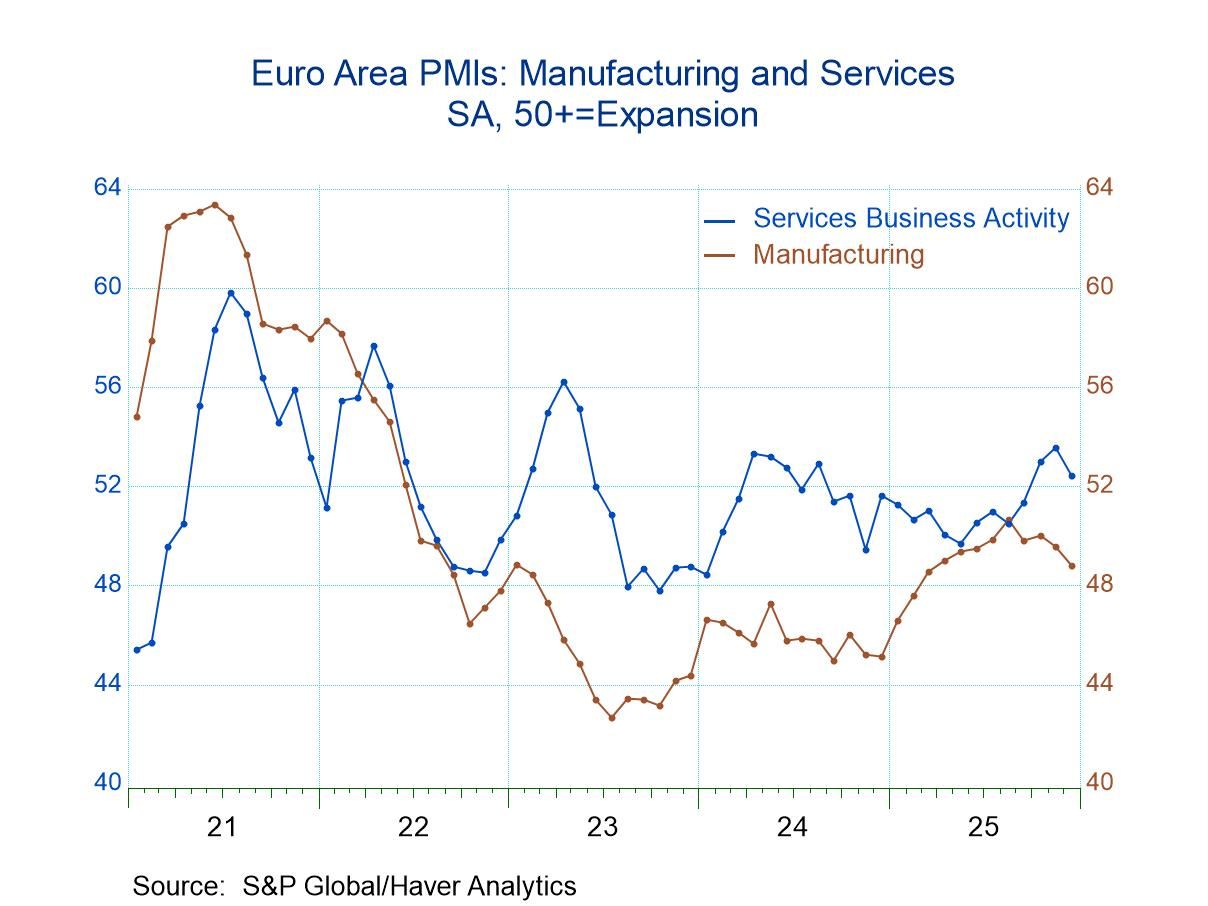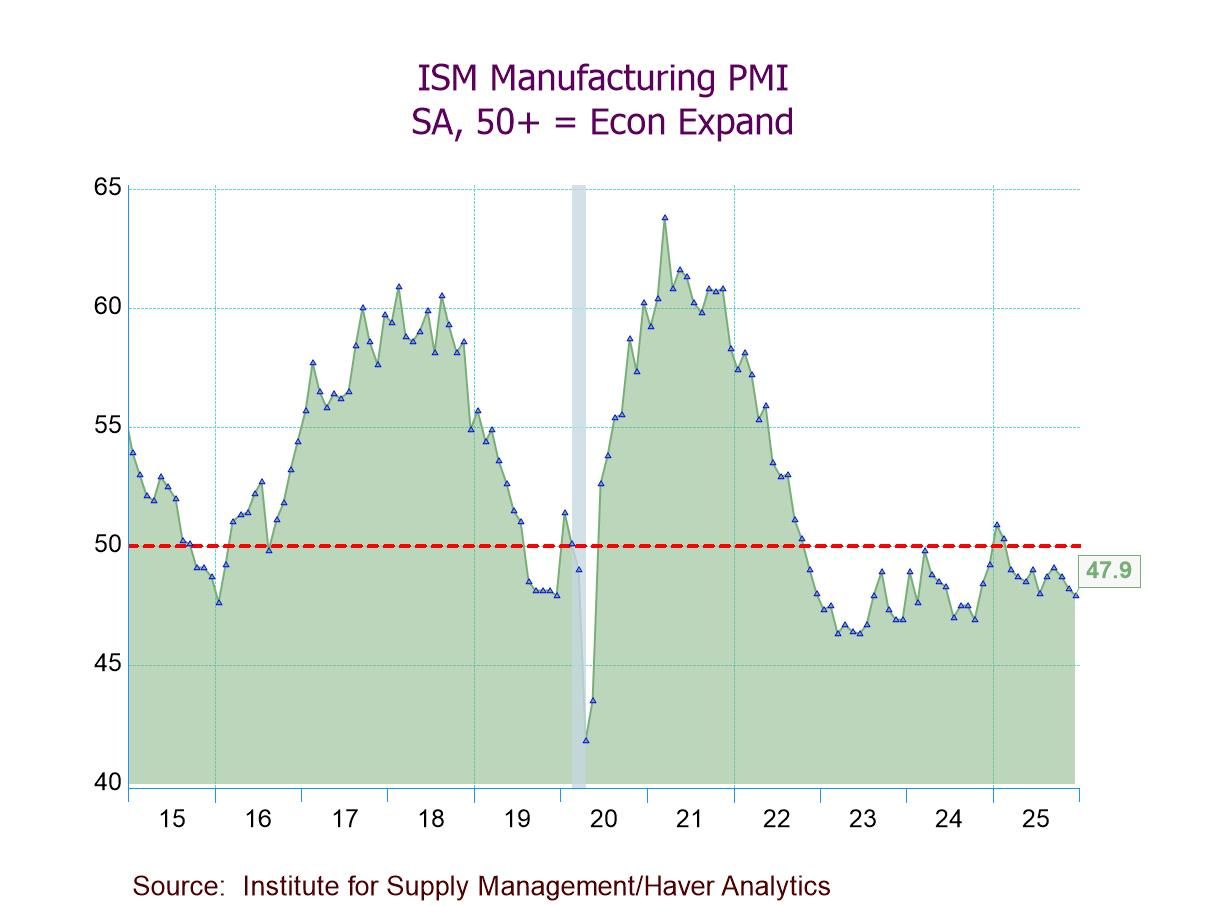U.S. GDP Growth Turns Positive in Q3'22
by:Tom Moeller
|in:Economy in Brief
Summary
- Upturn is led by foreign trade sector improvement.
- Capital spending growth accelerates but consumer spending slows.
- Price index increase decelerates.


Real GDP grew at an annual rate of 2.6% (1.8% y/y) during Q3'22, following unrevised declines of 0.6% and 1.6% in the prior two quarters. The latest figure compared to expectations for a 2.2% rise in the Action Economics Forecast Survey.
Improvement in the foreign trade deficit added 2.8 percentage points to growth last quarter after a 1.2 percentage point addition in Q2. The gain occurred as exports grew 14.4% (11.3% y/y) after rising 13.8% in Q2, and imports fell 6.9% (7.5% y/y) following a 2.3% gain. The contribution to growth from business inventories weakened to -0.7 percentage points after a 1.9 percentage point subtraction in Q2.
Growth in domestic final demand remained low at 0.5% (1.0% y/y) following a 0.2% improvement in Q2. These were the weakest growth rates since negative growth early in 2020. Real personal consumption expenditure growth last quarter eased to 1.4% (2.0% y/y) from 2.0% in Q2. Durable goods outlays fell 0.8% (+2.2% y/y) as spending on motor vehicle & parts fell 11.7% (-0.5% y/y), but furniture & appliance spending rose 3.2% (-1.7% y/y). Spending on recreational goods & vehicles improved 8.0% (7.9% y/y). In the nondurable goods sector, spending declined 1.4% (-1.9% y/y) as outlays on food & beverages fell 3.8% (-5.2% y/y), off for the third straight quarter. Clothing outlays improved 4.7% (0.1% y/y) while gasoline & oil expenditures weakened 5.9% (-3.7% y/y). Purchases of services rose 2.8% (3.2% y/y). Housing & utilities outlays gained 0.3% (0.9% y/y) and health care outlays increased 2.9% (1.7% y/y). Spending on recreation increased 0.8% (6.8% y/y) while spending at restaurants & hotels increased 3.3% (5.6% y/y).


Business fixed investment growth rose to 3.7% (3.2% y/y) in Q3'22 after edging 0.1% higher in Q2. Structures investment fell 15.4% and has been falling since the end of 2019. Equipment investment surged 10.8% (5.3% y/y) led by a 92.1% gain (8.9% y/y) in transportation equipment. Investment in industrial equipment fell 12.7% (+0.6% y/y) while investment in intellectual property products rose 6.9% (8.7% y/y), strong since the end of the recession.
Residential investment declined 26.4% last quarter (-12.7% y/y), the sixth consecutive quarterly decline.
Government spending increased 2.4% (-0.6% y/y) in Q3'22 after declining in each of the prior five quarters. Federal government spending gained 3.7% (-1.3% y/y) as defense spending rose 4.7% (-2.0% y/y). Nondefense spending increased 2.2% (-0.3% y/y). State & local government spending rose 1.7% (-0.2 y/y).
The GDP price index increased 4.1% (7.0% y/y) last quarter following a 9.0% Q2 rise. The Action Economics Forecast Survey expected a 5.3% increase. The PCE price Index rose 4.2% (6.3 y/y) after increasing 7.3%. The PCE price index less food & energy gained 4.5% (4.9% y/y), about the same as it did in Q2. The nonresidential price index rose 7.4% (7.6% y/y). The equipment price index improved 5.7% (7.3% y/y) but the intellectual property products index gained just 3.6% (2.9% y/y). The residential investment price index rose 8.3% (13.5% y/y) following six straight quarters of double-digit increase. The government spending price index rose 3.2% (7.6% y/y) after an 11.6% jump in the second quarter.
The GDP figures can be found in Haver's USECON and USNA databases. USNA contains virtually all of the Bureau of Economic Analysis' detail in the national accounts. Both databases include tables of the newly published not seasonally adjusted data. The Action Economics consensus estimates can be found in AS1REPNA.


Tom Moeller
AuthorMore in Author Profile »Prior to joining Haver Analytics in 2000, Mr. Moeller worked as the Economist at Chancellor Capital Management from 1985 to 1999. There, he developed comprehensive economic forecasts and interpreted economic data for equity and fixed income portfolio managers. Also at Chancellor, Mr. Moeller worked as an equity analyst and was responsible for researching and rating companies in the economically sensitive automobile and housing industries for investment in Chancellor’s equity portfolio. Prior to joining Chancellor, Mr. Moeller was an Economist at Citibank from 1979 to 1984. He also analyzed pricing behavior in the metals industry for the Council on Wage and Price Stability in Washington, D.C. In 1999, Mr. Moeller received the award for most accurate forecast from the Forecasters' Club of New York. From 1990 to 1992 he was President of the New York Association for Business Economists. Mr. Moeller earned an M.B.A. in Finance from Fordham University, where he graduated in 1987. He holds a Bachelor of Arts in Economics from George Washington University.




 Global
Global

